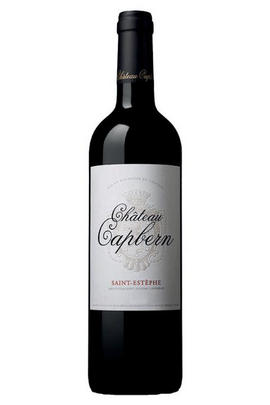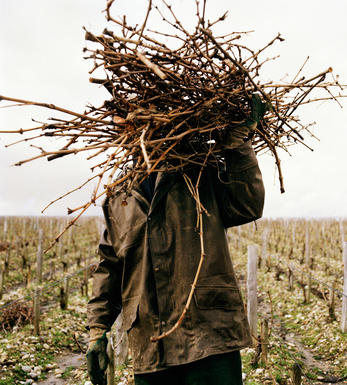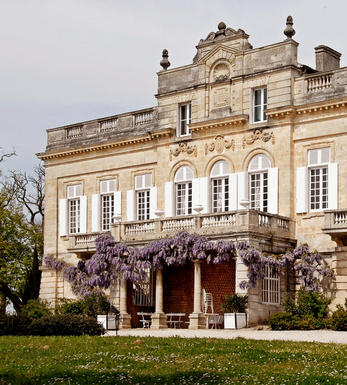
2016 Château Capbern, St Estèphe, Bordeaux

Critics reviews
The 2016 Capbern is a blend of 69% Cabernet Sauvignon, 25% Merlot, 4% Cabernet Franc and 2% Petit Verdot aged for 18 months in 60% new and 40% one-year-old oak. Deep garnet-purple colored, it leaps from the glass with cedar, blackberries and blueberries with wafts of tobacco, bay leaves and scorched earth. Medium to full-bodied, elegant and vibrant in the mouth, it possesses lovely poise and an earthy finish.
Drink 2019 - 2036
Lisa Perrotti-Brown, Wine Advocate (Nov 2018)
Very deep crimson. Round and flattering texture with lots of zappy tannin. A little more angular than the famous 2009 but very easy to drink. Tannins quite marked at the moment. Very round tannins but they are there in such profusion that you will have to wait...
Jancis Robinson, jancisrobinson.com (Apr 2017)
Made by the team at Château Calon-Segur, this is a superb Capbern. Deep, round luxurious, this vintage is bold and plush, with concentrated fruit, a mineral edge, and powerful, but silky tannins. Though the blend is heavy on Cabernet Sauvignon, at 69%, with 25% Merlot, 4% Cabernet Franc and 3% Petit Verdot, it’s drinkable now but has plenty of structure to age for 20 years. It’s matured in 60% new oak. Until the 2013 vintage, this was known as Château Capbern-Gasqueton, a reliable buy. Now it’s on an upward track with more balance and finesse.
Drink 2021 - 2035
Elin McCoy, Decanter.com (Apr 2021)
About this WINE

Chateau Capbern
Chateau Capbern Gasqueton in Bordeaux has been in the ownership of the Gasqueton family, owners of the 3rd classed Growth Ch Calon Ségur, for 10 generations. It is a Cru Bourgeois, located close to the best part of St Estephe, and has 41 hectares under vine.
Unsurprisingly in view of the excellence of Calon Ségur at present this is a well-run estate, producing wines of charm and structure capable of lasting comfortably 10-20 years in good vintages. The fruit is all hand-harvested and oak is used judiciously, with only one-third of the barrels new each year. 10,000 cases are produced and in the context of the current pricing of top Bordeaux we regard this as offering excellent value for money.

Saint-Estèphe
Saint-Estèphe is the northernmost of the most important communes of the Médoc and borders Pauillac on its southernmost border, with only a gully and stream separates it from Ch. Lafite. To the north lies the Bas-Médoc.
Saint-Estèphe is defined by the depth of its gravel, which is ubiquitous but of varying depths and occasionally very shallow, when clay predominates. This keeps the soil cooler and wetter than its counterparts so that the wines can appear fresh in lighter vintages, but superbly successful in hot, dry years.
The best châteaux in the south of the commune have the deepest soil and the thickest gravel. Cos d'Estournel has an exceptional terroir with its vineyards being located on a south-facing ridge of gravel with excellent drainage.
Saint-Estèphe is the least gravelly of main Médoc communes and in the north of the commune the vineyards are heavier and more clay-based leading to a rustic style of wine being produced.
The wines can appear austere in youth with a discernable ferric note at some châteaux, but the best typically display good depth of colour, pronounced acidity an tannins in youth and are exceptionally long-lived. At their best, they are the equal of almost any Bordeaux. The well-regarded St Estèphe co-operative controls the production of about half the appellation.
Recommended Châteaux
Cos (Ch. Cos d'Estournel), Ch. Montrose, Ch. Calon-Ségur, Ch. Lafon-Rochet, Ch. Les Ormes de Pez, Ch. Beau-Site, Ch. Cos Labory, Ch. Phélan-Ségur

Cabernet Sauvignon Blend
Cabernet Sauvignon lends itself particularly well in blends with Merlot. This is actually the archetypal Bordeaux blend, though in different proportions in the sub-regions and sometimes topped up with Cabernet Franc, Malbec, and Petit Verdot.
In the Médoc and Graves the percentage of Cabernet Sauvignon in the blend can range from 95% (Mouton-Rothschild) to as low as 40%. It is particularly suited to the dry, warm, free- draining, gravel-rich soils and is responsible for the redolent cassis characteristics as well as the depth of colour, tannic structure and pronounced acidity of Médoc wines. However 100% Cabernet Sauvignon wines can be slightly hollow-tasting in the middle palate and Merlot with its generous, fleshy fruit flavours acts as a perfect foil by filling in this cavity.
In St-Emilion and Pomerol, the blends are Merlot dominated as Cabernet Sauvignon can struggle to ripen there - when it is included, it adds structure and body to the wine. Sassicaia is the most famous Bordeaux blend in Italy and has spawned many imitations, whereby the blend is now firmly established in the New World and particularly in California and Australia.


Buying options
Add to wishlist
Description
Made by the team at Château Calon-Segur, this is a superb Capbern. Deep, round luxurious, this vintage is bold and plush, with concentrated fruit, a mineral edge, and powerful, but silky tannins. Though the blend is heavy on Cabernet Sauvignon, at 69%, with 25% Merlot, 4% Cabernet Franc and 3% Petit Verdot, it’s drinkable now but has plenty of structure to age for 20 years. It’s matured in 60% new oak. Until the 2013 vintage, this was known as Château Capbern-Gasqueton, a reliable buy. Now it’s on an upward track with more balance and finesse.
Drink 2021 - 2035
Elin McCoy, Decanter.com (Apr 2021)
wine at a glance
Delivery and quality guarantee